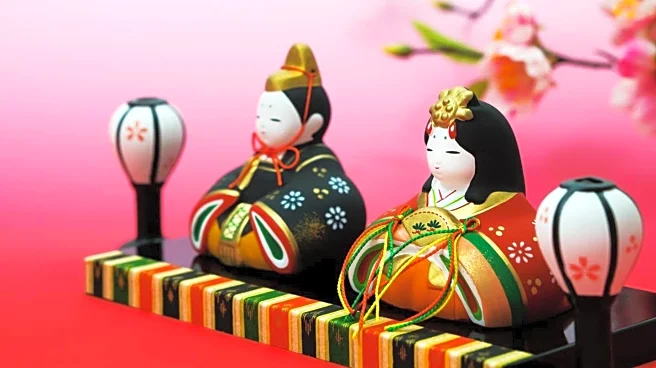What's Happening?
The Tokyo National Museum houses two ancient haniwa figurines, known as the 'Dancing People,' which date back to the Kofun period of Japanese history (300-710 AD). These clay figures, discovered in 1930 in Saitama prefecture, are believed to have been used as tomb decorations and possibly held spiritual significance. The haniwa, characterized by their simplistic design and open-mouthed expressions, are thought to represent singers or dancers, reflecting the cultural practices of the time.
Why It's Important?
The discovery and study of haniwa figurines provide valuable insights into the funerary customs and spiritual beliefs of ancient Japan. These artifacts help historians and archaeologists understand the social and cultural dynamics of the Kofun period, a time marked by significant developments in Japanese society. The haniwa also highlight the importance of art and symbolism in ancient rituals, offering a glimpse into the ways people of the past sought to connect with the spiritual world.
Beyond the Headlines
The haniwa figurines' representation of human and animal forms suggests a complex understanding of identity and the afterlife in ancient Japan. As researchers continue to study these artifacts, they may uncover more about the roles these figures played in marking grave boundaries and their potential function as vessels for the souls of the deceased.












